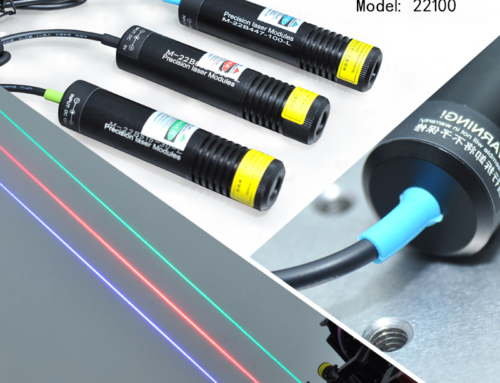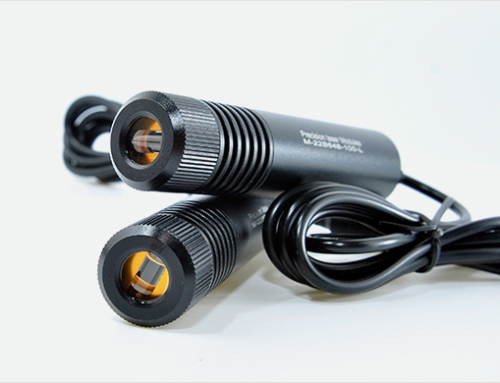Principle:
According to the energy level transition mechanism of the molecular absorption spectrum and fluorescence spectrum of substances, a substance with the ability to absorb photons can emit light that is longer than the excitation light in an instant under specific wavelength light (such as ultraviolet light), that is, fluorescence. The relationship between fluorescence intensity and substance concentration can be expressed as: I=kC, so the ultraviolet fluorescence intensity I has a linear relationship with the concentration C of the sample gas. This is an important basis for quantitative detection by ultraviolet fluorescence method.
Two measurement methods:
Direct measurement method: use the fluorescence emitted by the substance to perform measurement and analysis.
Indirect measurement method: Since some substances do not emit fluorescence (or fluorescence is very weak), it is necessary to convert non-fluorescent substances into fluorescent substances. For example, some reagents (such as fluorescent dyes) are used to form a complex with a substance that does not emit fluorescence. This complex can emit fluorescence and then perform the measurement. Therefore, the use of fluorescent reagents has opened the door to fluorescent analysis of some inorganic and organic substances that originally did not fluoresce, and expanded the scope of analysis.
Whether it is direct or indirect measurement, the standard working curve method is generally used to take various known amounts of fluorescent substances and prepare a series of standard solutions to determine the fluorescence intensity of these standard solutions, and then give the fluorescence intensity comparison The working curve of the concentration of the standard solution. Under the same instrument conditions, measure the fluorescence intensity of the unknown sample, and then find the concentration (ie content) of the unknown sample from the standard working curve.
Commonly used fluorescence analysis instruments are: visual fluorometer (fluorescence analysis lamp), fluorophotometer and fluorescence spectrophotometer.
Fluorescence analysis is an advanced analysis method, which is more widely used and popular than electron probe method, mass spectrometry, spectroscopy, polarography, etc., which is inseparable from the many advantages of fluorescence analysis. The equipment used for fluorescence analysis is relatively simple, such as visual fluorometer and fluorophotometer, which are very simple in structure and can be manufactured by ourselves. Compared with mass spectrometers, polar spectrometers and electron probes, it is many times cheaper in cost, and the biggest feature of fluorescence analysis is: high analytical sensitivity, strong selectivity and easy to use. There are not many instruments that have these three characteristics at the same time.
Laser Induced Fluorescence Analysis (LIF)
The characteristics of laser: high brightness, good directionality, good monochromaticity, good coherence.
Instrument composition: Like ordinary fluorescence detectors, laser-induced fluorescence detectors are mainly composed of light sources, optical systems, detection cells, and light detection elements. The most important difference between the two is that the light source of laser-induced fluorescence detectors is a laser.
Laser: The laser is an important part of the laser-induced fluorescence detector. It uses pulsed laser as the light source and adopts time-resolved technology to eliminate Rayleigh scattered light (small particles with a radius much smaller than the wavelength of light or other electromagnetic radiation from scattering to the incident beam ) And Raman scattered light (the frequency of the light wave changes after being scattered) interferes with the measurement, and at the same time increases the selectivity of the measurement between the measured components. The above characteristics greatly enhance the signal-to-noise ratio of the laser-induced fluorescence detector, showing the highest sensitivity and better selectivity.
Optical system: The optical system components of the laser-induced fluorescence detector are mainly optical lenses and monochromators.
The light detector uses two monochromators to split light to eliminate the interference of stray light on fluorescence detection. The excitation monochromator splits the light source to obtain the excitation beam of the required wavelength, and the emission monochromator is used to remove interference fluorescence and other stray light. When a laser is used as the light source, especially a tunable laser, only one emitting monochromator can be used. Using grating to split light can get a higher signal-to-noise ratio, but its light transmission efficiency is low. For example, an f/4 grating can only transmit about 0.3% of the incident light intensity. The filter has a relatively high light transmission efficiency (>50%). The laser itself has good monochromaticity, so bandpass filters are rarely used, and shear filters and spatial filters are more commonly used.
Detection cell: conventional liquid chromatography detection cell, more cubes are used. The laser is incident on the detection cell vertically, which eliminates the background noise caused by laser scattering and improves the detection sensitivity.
Light detection components: The available light detection components include photomultiplier tubes, diode array detectors and charge-coupled devices. The photomultiplier tube is the most common application. Comparing the three, the charge-coupled device has higher quantum efficiency and signal-to-noise ratio, and the enhanced type can even perform single-molecule detection. Through addition and combination, charge-coupled devices can further improve the signal-to-noise ratio, but the high price limits its application.
Application: chemical, biological, pharmaceutical analysis; judicial forensic identification; environmental pollution monitoring; measurement technology; biological disease diagnosis





